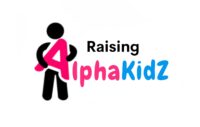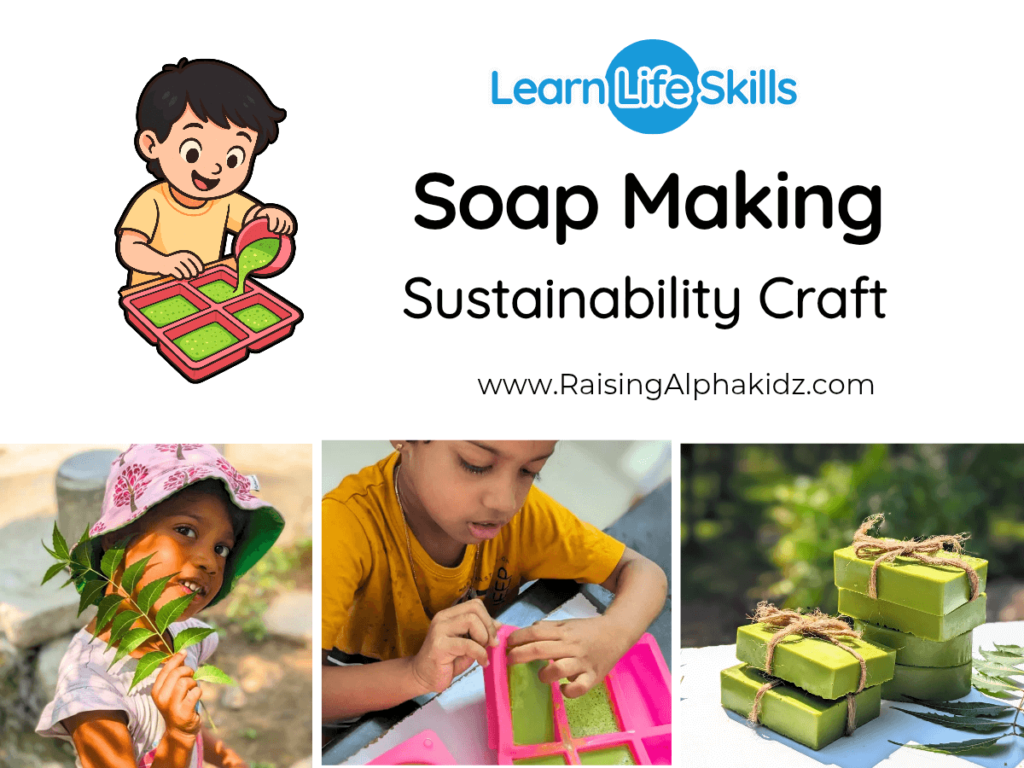Soap Making With Kids: Sustainability Craft
Looking for a fun, eco-friendly activity to do with your child? Soap making with kids is not only exciting but also a fantastic way to teach sustainability, life skills, and creativity—all in one bubbly session! In this simple guide, we’ll show you how to make DIY herbal soaps using the melt and pour method—a safe and easy option perfect for little hands.
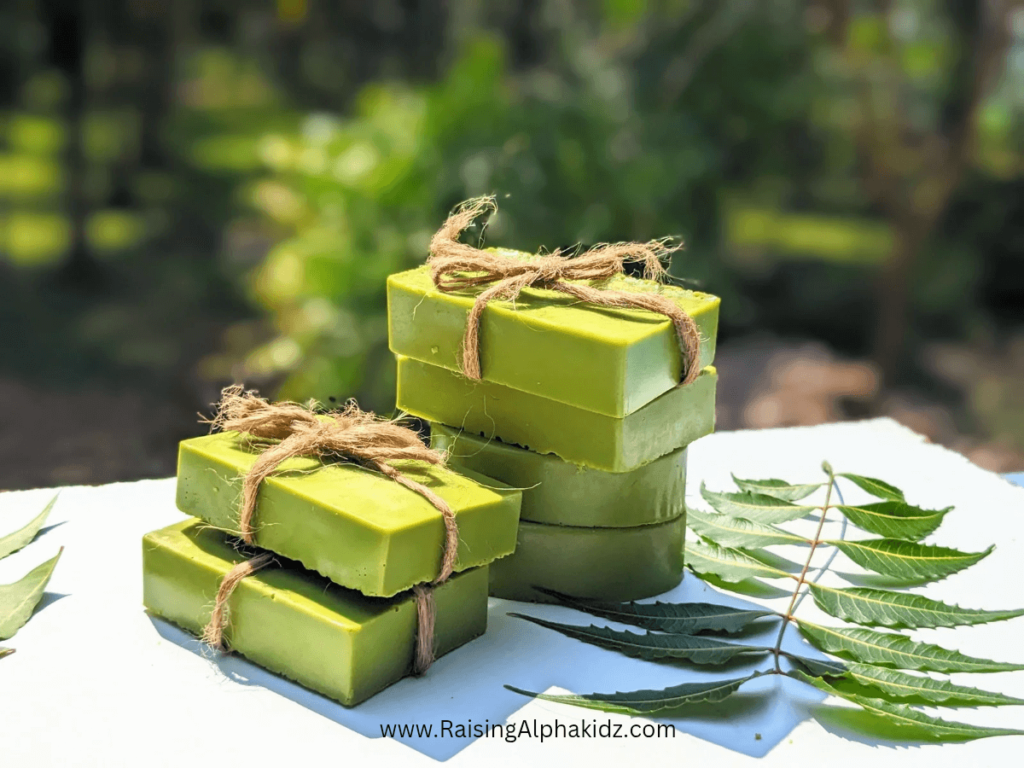
Whether you’re homeschooling, planning a weekend activity, or just want to cut down on store-bought products, this sustainable soap-making craft is a must-try!
Craft Essentials You’ll Need
Before we begin, gather the following materials:
- 🏷️Melt and Pour Soap Base (Glycerin, Shea butter, or Goat milk base)
- Oven-safe bowl or double boiler bowl
- Herbal extracts (homemade or essential oils)
- 🏷️Soap molds
- 🏷️Knife to cut soap base
- 🏷️Spatula for stirring
- Cloth for filtering herbal juice (muslin or cheesecloth)
Popular Methods of Soap Making
There are two popular soap-making methods:
- Cold Process Soap Making: This involves mixing oils and lye (sodium hydroxide). While this method allows full control and customization, it’s not safe for kids due to chemical handling and curing time.
- Melt and Pour Soap Making: A beginner-friendly, safe, and quick method perfect for kids. You simply melt a pre-made soap base, mix in your favorite natural ingredients, and pour it into molds.
For kids, we recommend the Melt and Pour method—it’s safe, quick, and oh-so-fun!
Step-by-Step Guide: DIY Herbal Soap with Kids
1. Herbal Hunt from the Garden
Turn your backyard garden or farm into a mini adventure zone! Go on a herbal hunt with your kids to collect skin-friendly leaves and flowers.

We chose extracts from :
- Neem
- Indian nettle (Acalypha indica)
- Aloe vera
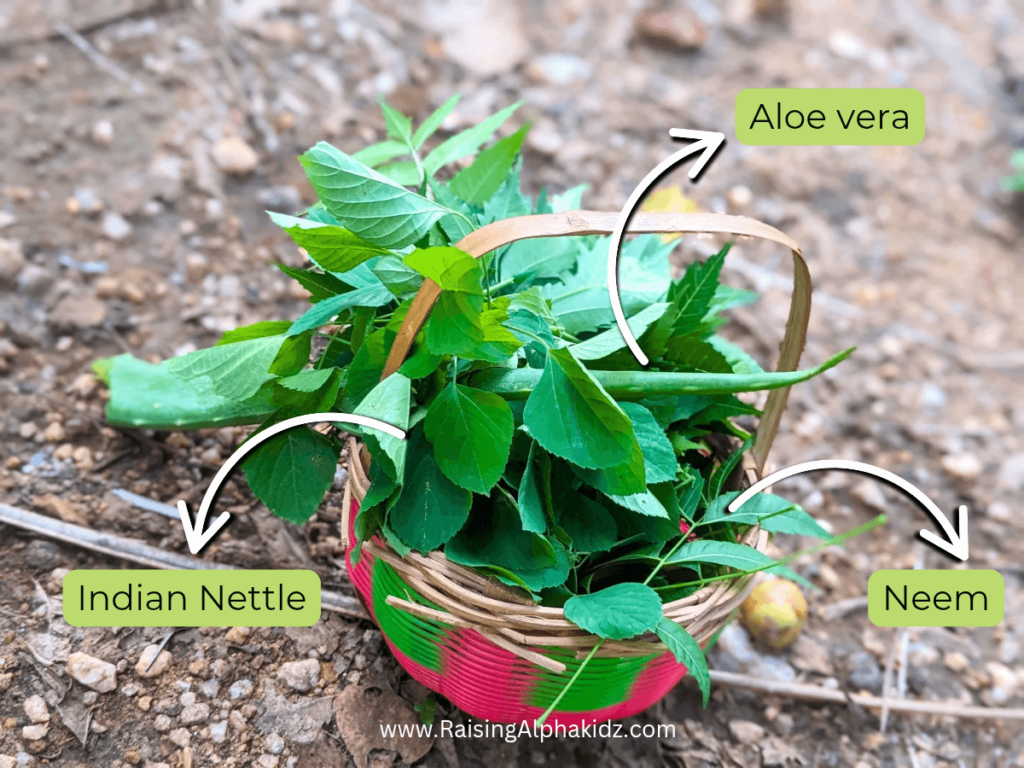
You can also try extracts from:
- Rosemary
- Rose petals
- Wild basil
- Lavender
- Mint
Create Herbal Extracts
- Blend herbs with a little water.
- Strain the juice using cheesecloth.
- Save the pulp for compost (zero waste!).
2. Melting the Soap Base
Cut the soap base into cubes and use oven method or double boiler method to melt it.
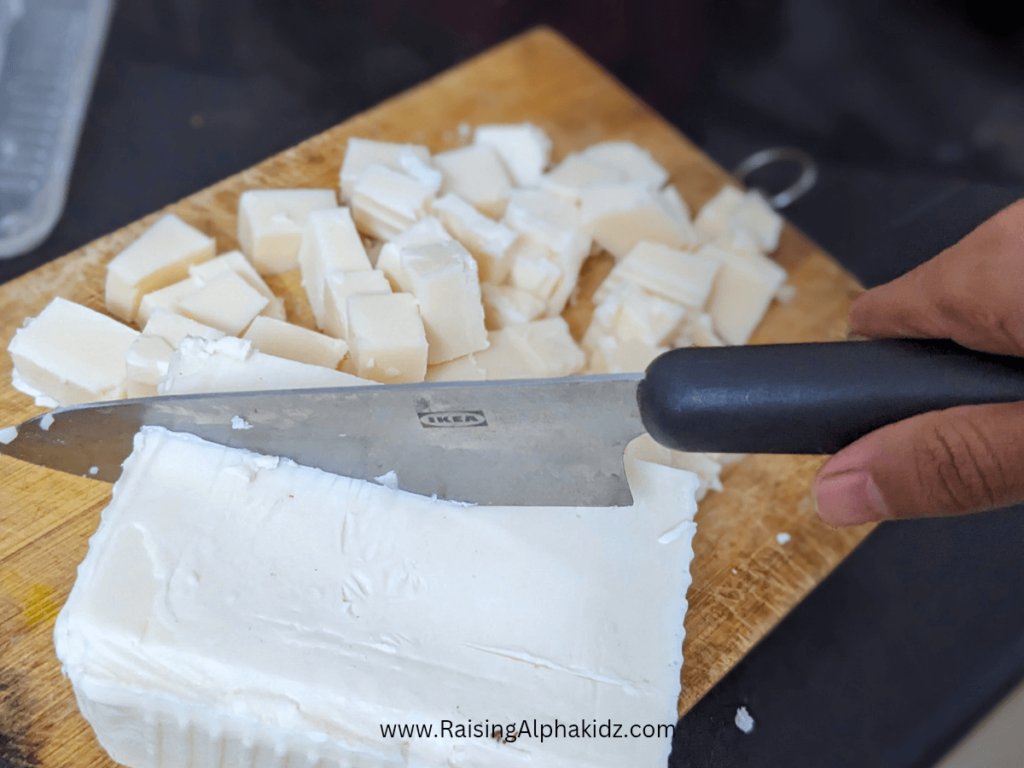
Option A: Oven Method
- Preheat the oven to 180°F (82°C).
- Cut the soap base into small cubes.
- Place them in an oven-safe bowl and heat for 5–10 minutes, stirring every 2 minutes.
- Keep a close eye to avoid overheating or burning.
Option B: Double Boiler Method
- Fill a pan with water and bring it to a gentle boil.
- Place a heat-safe bowl with soap cubes over the boiling water.
- Stir until the soap is fully melted.
This is a perfect moment to explain heat transfer to kids!
Safety First: Always let adults handle melting—kids can watch the “magic” from a safe distance!
3. Add Herbal Extracts
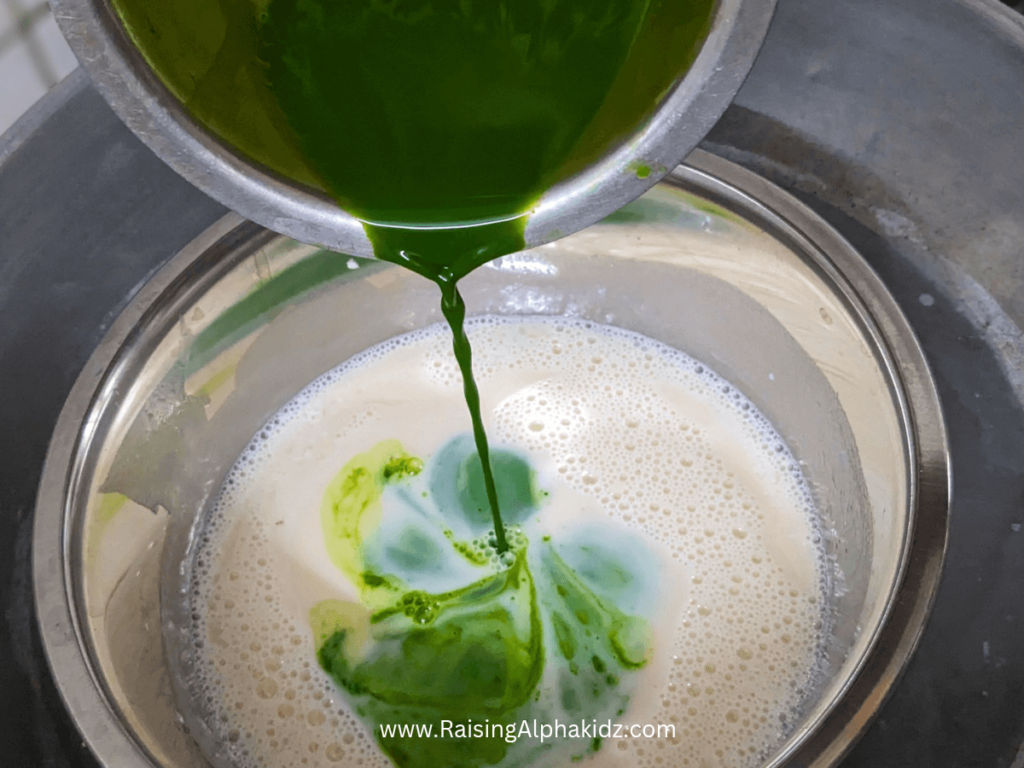
Once melted, remove the soap base from heat and stir in the herbal extract. Mix well to ensure the goodness is evenly spread throughout.
4. Pour Into Molds
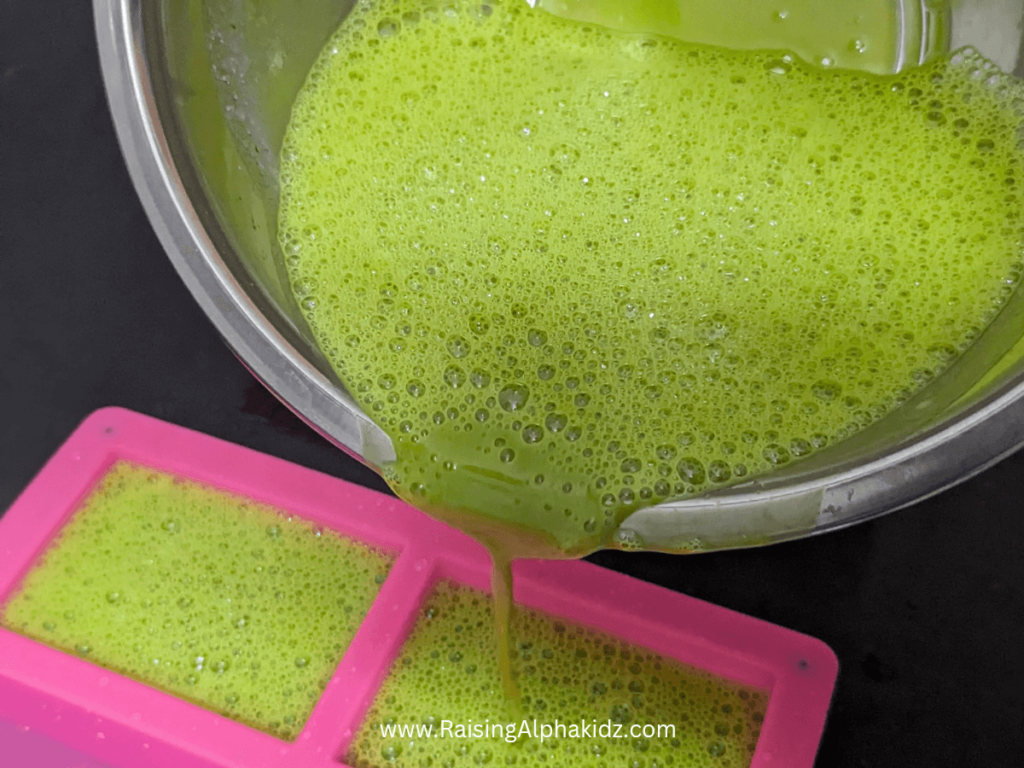
Carefully pour the mixture into fun-shaped molds—stars, flowers, or even animals. Let it set for 6 hours at room temperature.
5. Time to Unmold and Use!
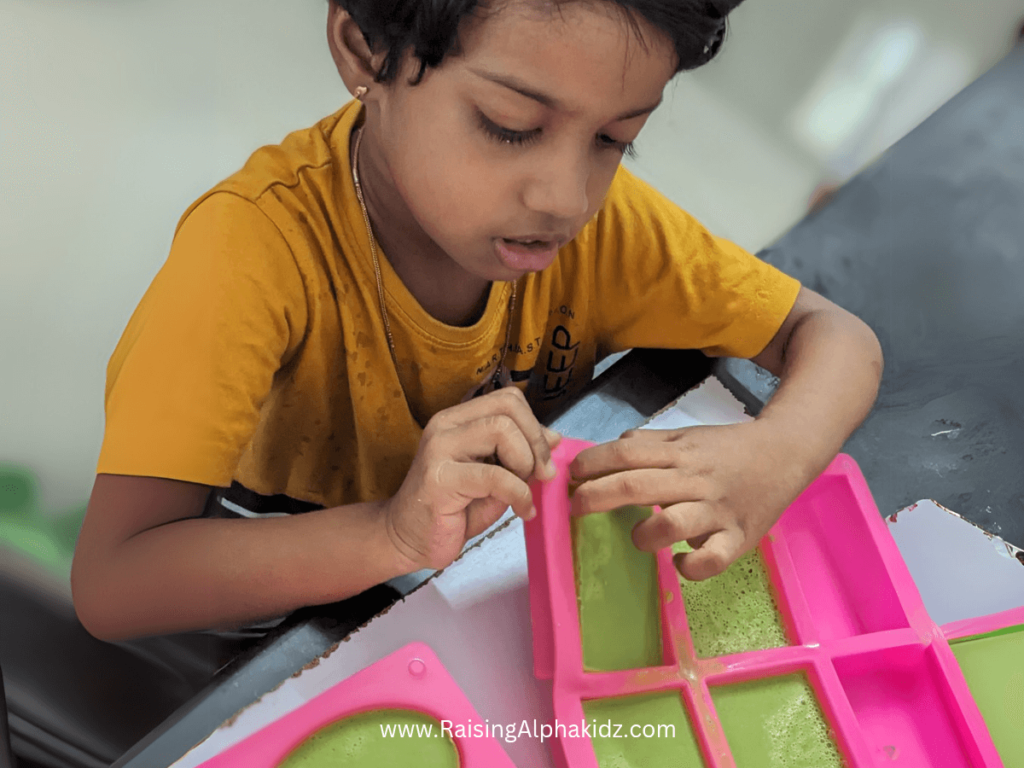
Ask your child to unmold the soaps—it’s oddly satisfying and super engaging.
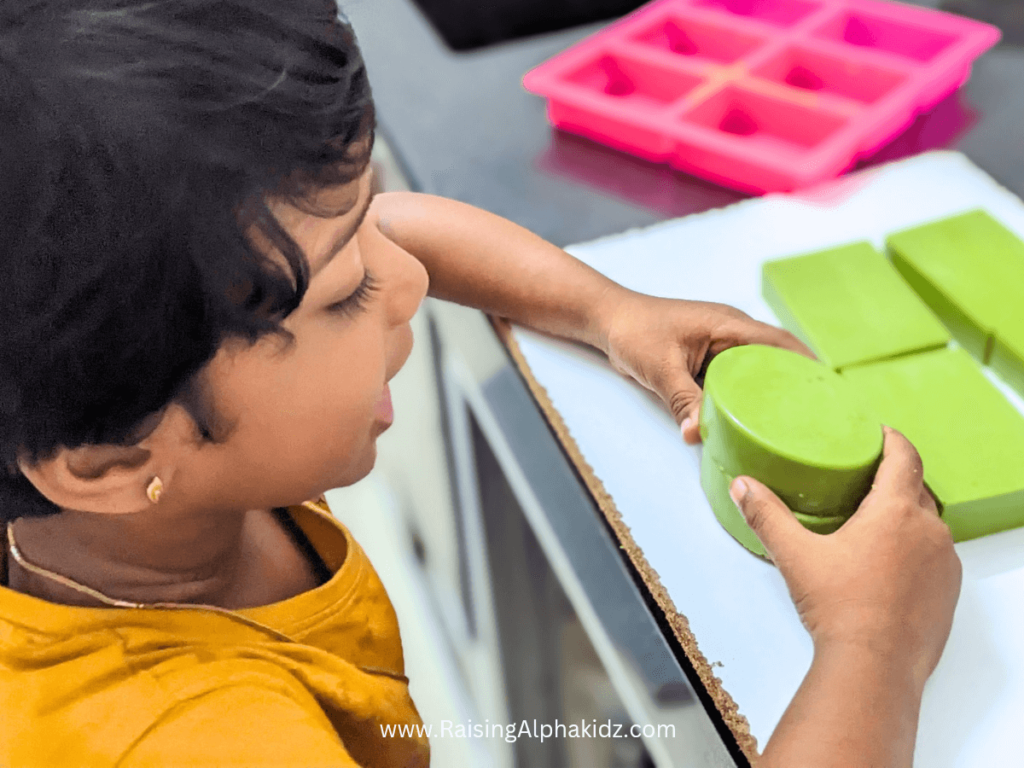
The unmolding and holding the soap in their hands is pure joy—kids love seeing their creations come to life!

Let them try washing their hands or take a bath using soaps made from garden herbs.
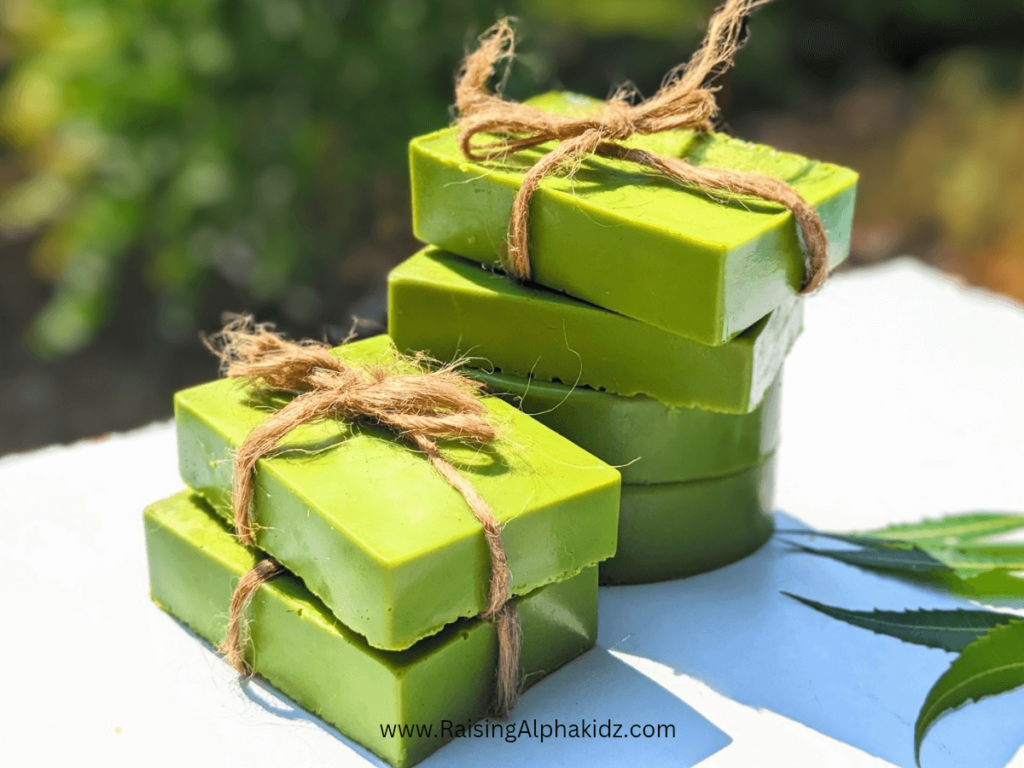
Why This is an Excellent Sustainability Craft
This activity teaches your child that everyday essentials can be made from scratch—naturally, at home. After our first session, my kid started asking, “Can we make our own toothpaste next?” on seeing toothpaste ad on TV. That’s the magic of involving kids in sustainable crafts—it plants the seed of self-sufficiency early on.
- Reduces Plastic Waste: Homemade soap avoids plastic packaging.
- Teaches Resourcefulness: Kids learn they can create, not just consume.
- Connects to Nature: Using garden herbs reinforces eco-awareness.
By using herbs from the garden, reducing packaging waste, and skipping synthetic ingredients, we’re showing them that nature provides everything we need—and that’s powerful.
What Kids Learn Through This Activity
- Basic science (melting point, herbal properties)
- Sustainable life skills and reducing waste
- Fine motor skills and sensory exploration
- Mindfulness and patience
- Confidence in creating something useful
Can You Use Lye for Soap Making with Kids?
Technically, yes—but we don’t recommend it for kids. Lye (sodium hydroxide) is caustic and requires gloves, goggles, and extreme care. It also involves a curing period of 4–6 weeks.
Melt and pour soap is much better suited for young children: quick results, no harsh chemicals, and full of learning opportunities.
Peekaboo Facts

Fun Fact: In ancient times, people made soap using hardwood ash (natural lye) mixed with oils/fats and herbs. Stay tuned—I’ll be posting a dish soap craft using natural ash lye soon!
Similar Kid-Friendly Sustainability Activities
These eco-friendly crafts are popular and frequently searched by parents:
- Kitchen Compost Project For Kids
- DIY Paper Making from Scrap Paper
- Leaf Printing Art for Kids
- Plantable Seed Paper Cards
- Homemade Bath Powder for Kids
- Homemade Health mix for Kids
- Compost Bottle Science Experiment
- Grow Your Own Herbs Garden
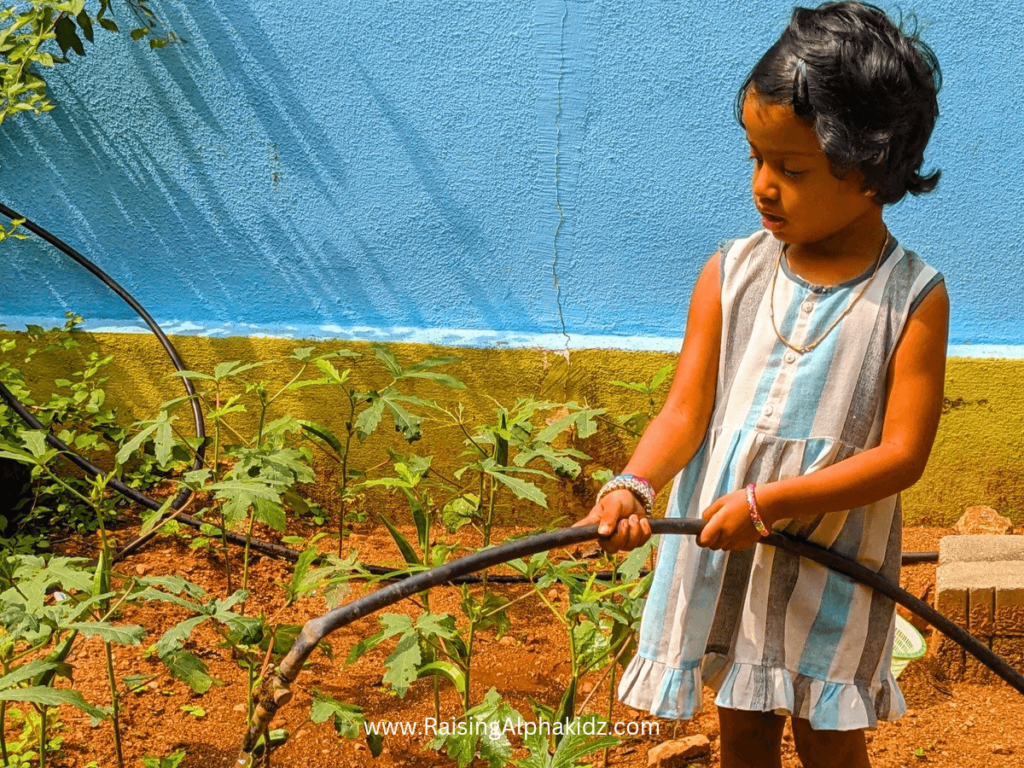




Source: Life Skill Activity Archive
Make, Learn, and Grow—Together
Soap making is more than just a craft—it’s a way to teach sustainability, creativity, and independence. Your child learns that not everything needs to come in a plastic bottle from a store. And the joy they get from using something they made? Priceless.
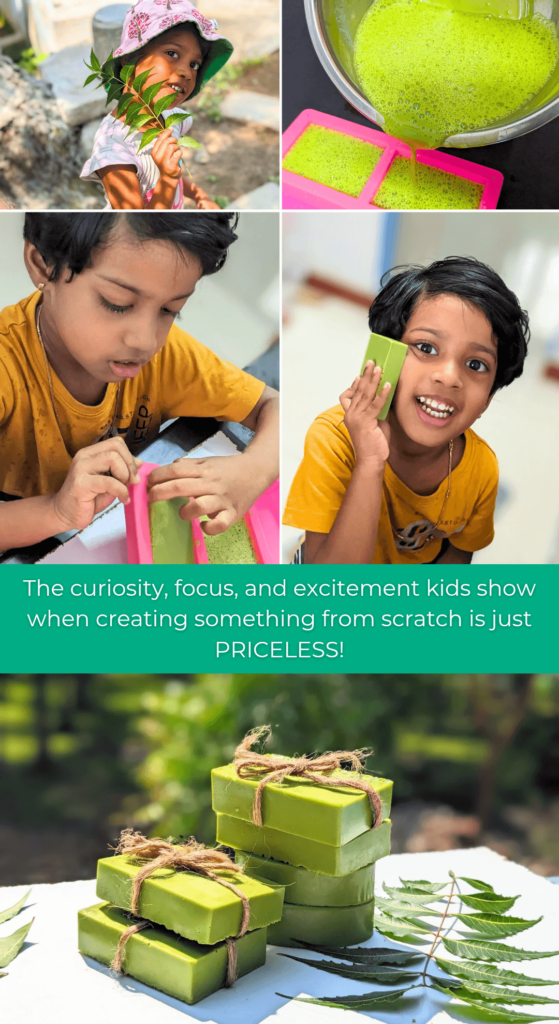
Ready to try it? Grab a melt-and-pour base, rally your little herbalists, and let the creativity flow. Share your soap stories in the comments, and don’t forget to reach us for more eco-friendly family projects!
